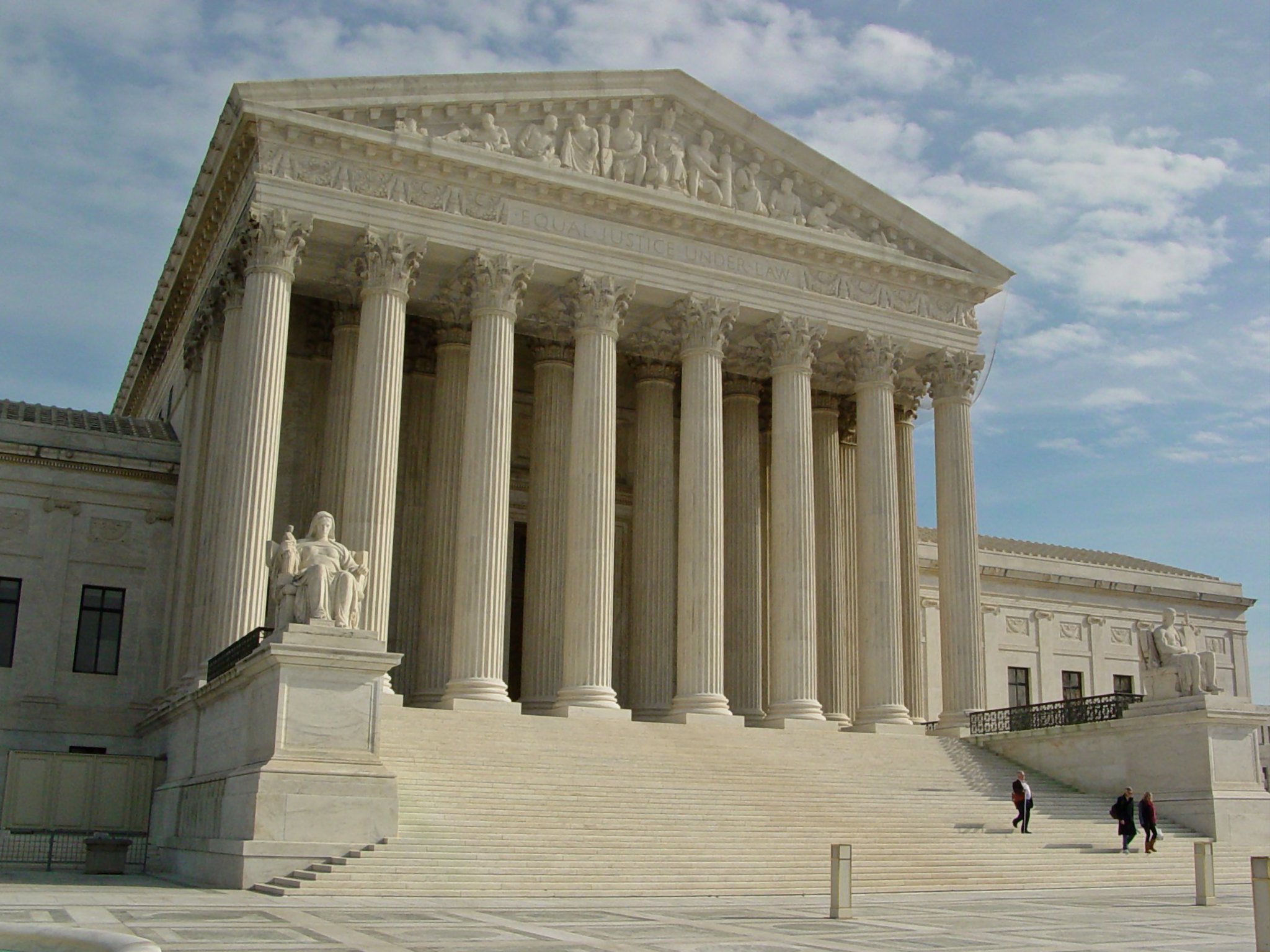A History, Taxonomy and Qualified Defense of the Presumption of Regularity
The presumption of regularity is an important principle that courts use in cases regarding executive discretion. However, failure to codify this principle has led to dozens of different interpretations and inconsistent application.

Published by The Lawfare Institute
in Cooperation With

Lawfare has been no stranger to discourse on the presumption of regularity during the Trump administration (see here, here, here, here, here and here). The presumption gained national significance during the Trump administration, but, with a few notable exceptions, the presumption of regularity has benefited from little scholarly engagement. In a forthcoming article, we trace, for the first time, the contemporary domain of the presumption and its applications from its pre-founding era source and seminal case, United States v. Chemical Foundation. In that case, the Supreme Court stated: “The presumption of regularity supports the official acts of public officers and, in the absence of clear evidence to the contrary, courts presume that they have properly discharged their official duties[.]” We conclude, however, that the presumption has taken on an eye-of-the-beholder quality because it does not possess a cohesive doctrinal structure. This lack of an articulated domain for the presumption and the scarcity of limiting principles placed upon it by the Supreme Court have facilitated at least 14 distinct scenarios in which it is applied by the federal judiciary, each of which carries a unique definition. We argue that the presumption of regularity is best understood as a “quasi-deference principle that federal courts apply in varying ways to presume federal officers and employees lawfully and consistently discharge their official duties.” We conclude by making the case that the Supreme Court or Congress should articulate a lawful and sensible doctrinal standard for the presumption of regularity to benefit each of the branches of the federal government and the American public.
The presumption of regularity is a generally deferential principle that courts apply to presume executive branch officers and employees are lawfully and consistently discharging their duties. Though it usually favors the government, it can weigh in favor of the non-executive branch actor when the government deviates from established norms or processes. It is not a singular evidentiary or proof rule but, rather, an array of principles that arises often in administrative law litigation but also occasionally in a criminal context, in judicial conduct, or in interbranch disagreements between the executive branch and the legislative branch. The Supreme Court has described it as “less a rule of evidence than a general working principle.” A person aggrieved by executive officials can rebut the presumption, but only by suing and making a “meaningful evidentiary showing” casting doubt on their official acts. At that point, a court will inquire as to whether the official duties were soundly discharged. By giving the government such credit, the presumption of regularity “narrows judicial scrutiny and widens executive discretion over decisionmaking processes and outcomes.”
The presumption’s heritage derives from English common law with some modifications in its application over the ensuing centuries. The concept finds roots in legal Latin: omnia praesumuntur rite et solemniter esse acta donec probetur in contrarium (“All things are presumed to have been done in proper and regular form”). Originally manifested in English common law, cases from the Court of King’s Bench decreed that “the presumption, that every man has conformed to the law, shall stand till something shall appear to shake that presumption.” Courts in the newly independent United States, including the Supreme Court of the United States, cited these cases and the presumption of regularity with approval. “It is general principle,” the Supreme Court opined in 1816, “to presume that public officers act correctly until the contrary be shown,” applying that principle to a land dispute.
Founding era courts did not confine the presumption to agencies, or even to executive acts of the government. The Supreme Court applied the presumption to credit judicial proceedings with frequency. In the mid-19th century, the court extended the presumption to private corporations in the same ministerial context enjoyed by government actors. Though the presumption’s beneficiaries were broad, courts applied it narrowly and predominantly to bridge a gap in direct evidence about a technicality.
United States v. Chemical Foundation (1926) is a significant case in the modern era. Rejecting the contention that a Department of State official acted unlawfully in ordering a sale of confiscated property abroad, the Supreme Court held that the presumption stands for the notion that public officers’ official duties are presumed to be properly discharged in the “absence of clear evidence to the contrary.” Before Chemical Foundation, the Supreme Court understood “the presumption was only prima facie evidence, subject to rebuttal.” But the court appeared to heighten the rebuttal standard without recognizing that it was doing so; the cases the opinion cited do not justify a heightened standard. Thus, we agree with Carissa Byrne Hessick’s conclusion that the case “doesn’t seem to provide a particularly sound foundation for the presumption—at least not for the presumption as it is currently invoked by the Court.” Indeed, the court began applying the presumption of regularity with increasing frequency after Chemical Foundation. This development proceeded unimpeded by the Administrative Procedure Act in 1946, which did not directly codify or regulate the presumption nor did its legislative history speak to the topic, though the statute commits the judiciary to deferential review to an enumerated body of agency actions.
Since Chemical Foundation, the presumption has shifted and expanded in scope. For example, courts now apply a presumption of good faith, which they sometimes confusingly equate to the presumption of regularity. The distinction is important because the presumption of good faith speaks to a government official’s motives or intent, which we think deserves closer scrutiny; in contrast, the presumption of regularity is more properly scoped to whether an official completed a ministerial act. Absent clarification from courts, these two distinct principles remain an undifferentiated quagmire for enterprising parties to exploit. The court has also cited the presumption of regularity as the reason for a heightened standard in a malicious prosecution claim. The court’s most recent use of the presumption was in Department of Commerce v. New York. There, the court held that the government’s rationale for adding a U.S. citizenship question to the 2020 census was “pretextual” and consequently arbitrary or capricious. This was the first time that the court had used the ground of pretext to hold that an agency action was arbitrary or capricious.
Despite these many markers, we have found it impossible to discern a unified conception of the presumption across the federal judiciary. Similarly, it is difficult to discern just how often parties invoke and rebut the presumption, given the small fraction of judicial orders that are published in reporters. Westlaw provides rough markers, including a headnote—“Official acts of public officers are presumed regular, in the absence of clear evidence to the contrary”—cited in more than 800 cases, including Chemical Foundation. There is no practical empirical way to measure the presumption’s application, but we observed an anecdotal split (with a dataset that was too small for statistical significance testing) in favor of courts finding the presumption unrebutted. These sorts of findings suggest that the presumption is a working principle that can favor plaintiffs in some cases but is most certainly not the Achilles’ heel of the executive branch as it was sometimes portrayed in the Trump era.
On the issue of whether the presumption and its many iterations are legitimate, we think that courts or Congress should keep the presumption. Several variations of the presumption are warranted in law and theory, as it appreciates what Alan Rozenshtein describes as “the realities of imperfect information and an imperfect government.” The Supreme Court or Congress should establish and enunciate the presumption’s contours, defining the circumstances in which it could be invoked while also imposing limiting principles for its unlawful excesses. Doing so would narrow the breadth of issues in cases that require judicial resolution, reduce circuit splits, and aid parties in managing expectations before agencies and in federal litigation. A contemporary and articulated standard might also decrease the need for Administrative Procedure Act litigation because the heightened predictability of outcome could lead agencies to render higher quality and better justified decisions. It would also respect the Oath Clauses of the Constitution. We think that the best version of a doctrinal (or statutory) presumption of regularity is a limited one: a limited presumption that a senior government official performed ministerial tasks and that sets the rebuttal standard at a preponderance of the evidence, not the higher clear-evidence standard.
Finally, we disagree with the notion that presidents and their administrations should permanently “lose” the presumption by virtue of acting irregularly in particular cases or that the presumption be deactivated as a penalty for bad behavior and reactivated for good behavior. As that line of reasoning goes, such administrations would begin defending a lawsuit without the “head start” provided by the presumption, but they could eventually earn back the right to assert the presumption over an unarticulated time period based on an unarticulated showing. We reject that reasoning. For one, there’s no limiting principle for its use that wouldn’t politicize the judiciary and reduce its legitimacy. We’re also not clear on how this weighing of the evidence (similar to the weighing of evidence on a claim that an agency is acting on pretext) differs at all from the ordinary transactional case-by-case weighing of evidence that federal judges perform every day. Evidence of an administration acting irregularly should simply be a merits question pertinent only to the case at hand. The deference detention box would also require the courts to drift into an inappropriate public rights model for the federal judiciary that strains the “Cases” or “Controversies” imperative.
The presumption of regularity exists for a good reason: It supposes that executive branch officials discharge their duties lawfully and regularly. However, the modern presumption of regularity has more than a dozen unique forms that have quietly developed over the decades in a decentralized fashion within the federal judiciary. We think that the Supreme Court should articulate and render doctrinal a lawful, discrete and commonsense standard for the presumption of regularity. Judicial or congressional inaction could simply allow the bench and bar to continue to proliferate the presumption inconsistently and expansively into new contexts.



.jpeg?sfvrsn=ad4bd1de_5)
.jpg?sfvrsn=676ddf0d_7)

